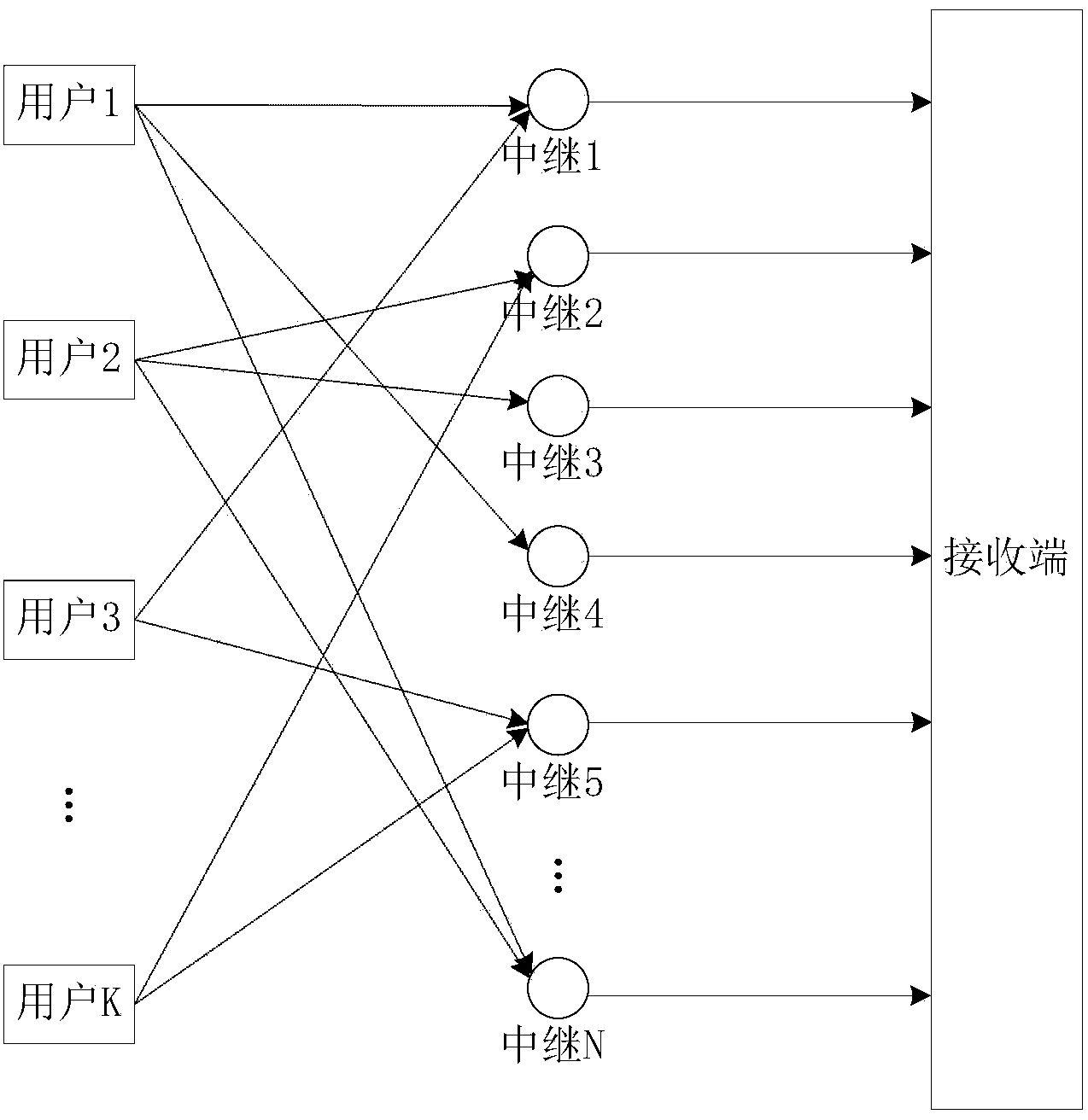Network coding cooperative communication method based on polarization codes
A network coding and cooperative communication technology, applied in the field of network coding cooperative communication based on polar codes, to achieve the effects of avoiding error propagation, optimizing transmission resources, and reducing error rates
- Summary
- Abstract
- Description
- Claims
- Application Information
AI Technical Summary
Problems solved by technology
Method used
Image
Examples
Embodiment 1
[0034] see figure 2 , for a network with 5 users at the sending end, the process of constructing its network cooperative communication with polar codes is as follows:
[0035] First determine the number of relay nodes to be used, that is, the polar codeword length N, because the number of users is 5, we choose N=2 3 =8 (n=3) to construct a polar code, assuming that the channel is an erasure channel, the erasure probability is ε=1 / 2, and then from the fundamental matrix get the matrix , n=3 in this embodiment, then the corresponding matrix is as follows:
[0036] F ⊗ 3 = 1 0 0 0 0 0 0 0 ...
Embodiment 2
[0041] Current network connections such as Figure 4 As shown, including 3 users and 8 relay nodes (relay 1-8), the corresponding generation matrix obtained based on the polar code construction method of the present invention is , and optimize the transmission resources, in the generation matrix G P In (8,3), because column 5 is the same as column 1, column 6 is the same as column 2, column 7 is the same as column 3, and column 8 is the same as column 4, it can be considered in four groups In (1,5), (6,2), (7,3), and (8,4), only one relay node in each group is reserved, and in this embodiment, relay 1 is selected based on the signal-to-noise ratio , 2, 3, 4, and, because the generator matrix G P In the fourth column of (8,3), only the element in the third row is 1, so the relay 4 is deleted, and the user 3 is directly connected to the receiving end. The optimized network connection is as follows Figure 5 shown. When decoding processing is performed at the receiving end, ...
PUM
 Login to View More
Login to View More Abstract
Description
Claims
Application Information
 Login to View More
Login to View More - R&D
- Intellectual Property
- Life Sciences
- Materials
- Tech Scout
- Unparalleled Data Quality
- Higher Quality Content
- 60% Fewer Hallucinations
Browse by: Latest US Patents, China's latest patents, Technical Efficacy Thesaurus, Application Domain, Technology Topic, Popular Technical Reports.
© 2025 PatSnap. All rights reserved.Legal|Privacy policy|Modern Slavery Act Transparency Statement|Sitemap|About US| Contact US: help@patsnap.com



